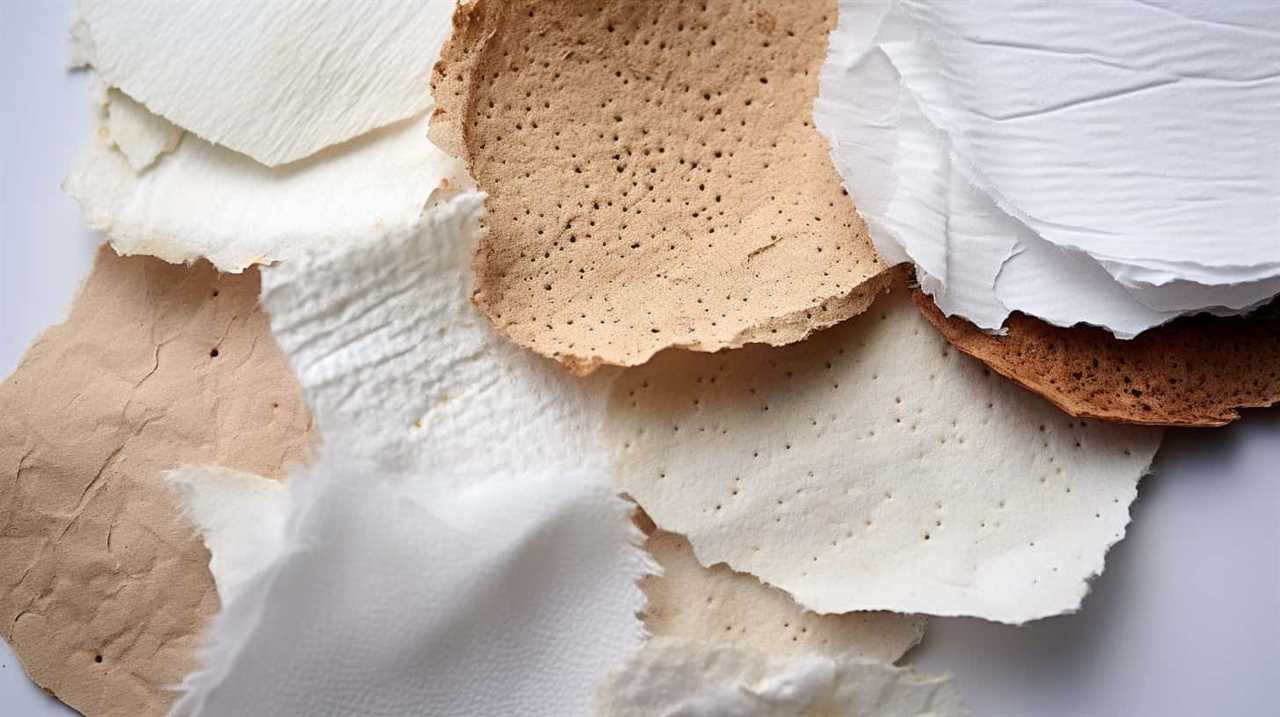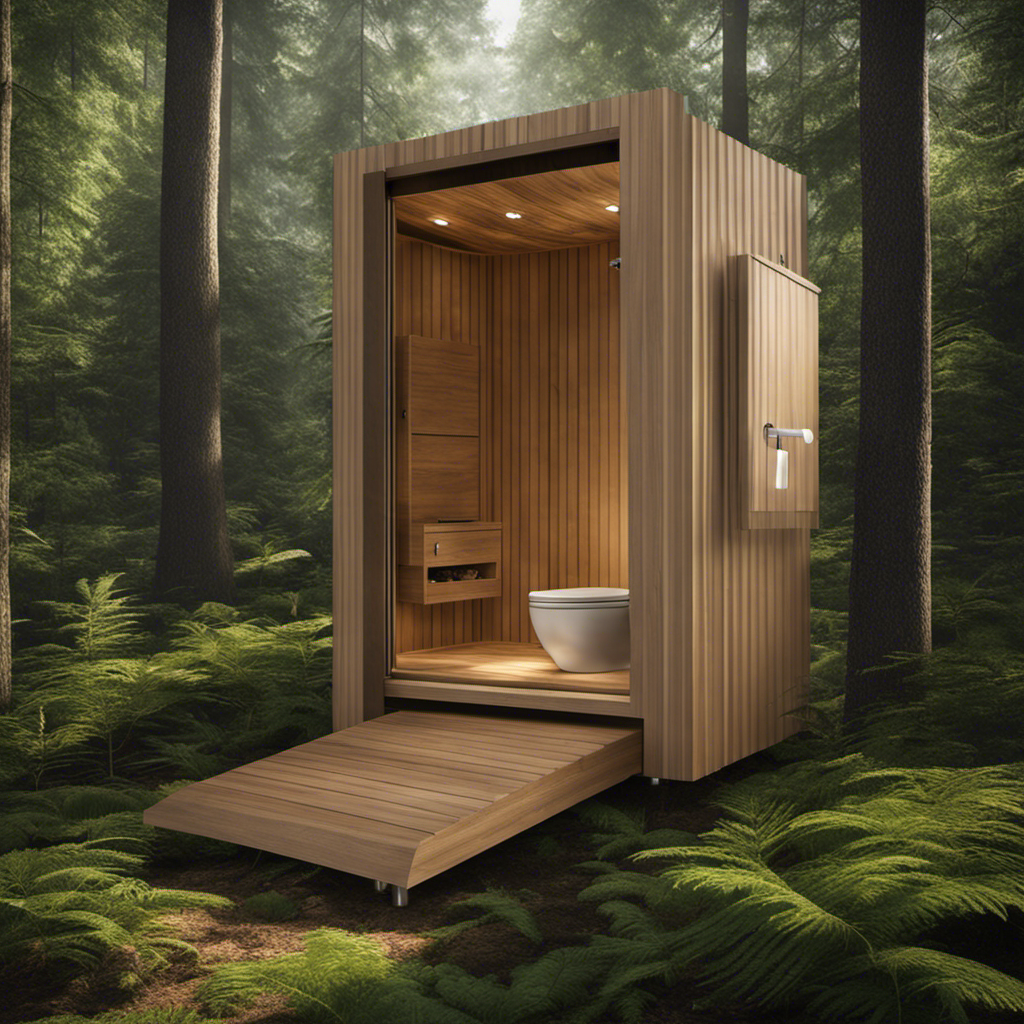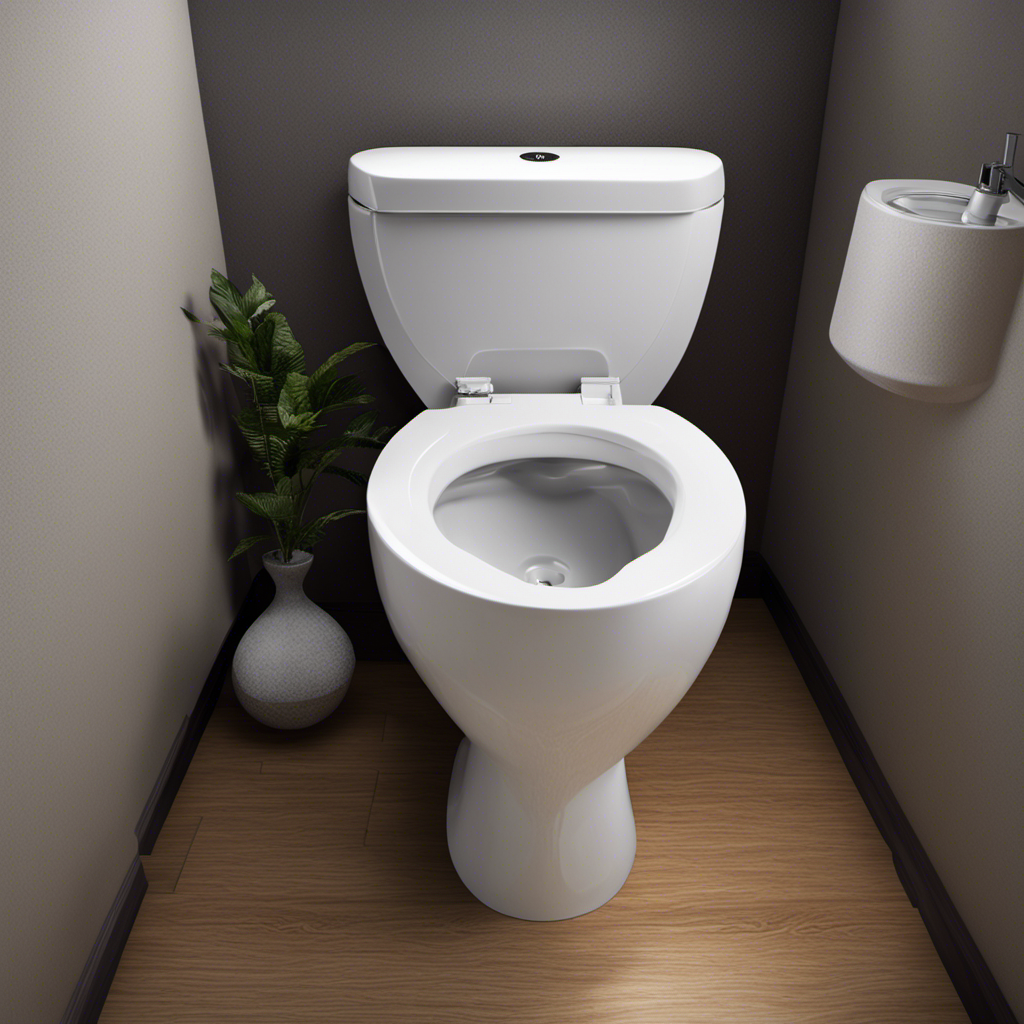All of us have experienced that instant when traveling overseas and coming across a bidet for the very first time. The bewilderment, the fascination, and the acknowledgment of cultural disparity.
But which countries truly embrace the bidet? In this article, we’ll delve into the data and explore the bidet usage in Japan, the bidet adoption in Italy, the bidet culture in France, and more.
Get ready for a journey around the world to discover which countries are the true bidet champions.
Key Takeaways
- Italy has the highest bidet adoption rate among all countries, with approximately 97% of households having a bidet.
- Japan has seen a steady increase in bidet adoption, with approximately 81% of households having bidets installed in their bathrooms.
- Bidets are widely used in households in Spain, with approximately 85% of households having a bidet.
- Bidet usage varies significantly across different countries, with the United States and China having relatively low adoption rates.
Bidet Usage in Japan
In Japan, we often use bidets to maintain cleanliness and hygiene. Bidet technology advancements have greatly influenced bidet usage among different age groups in the country.
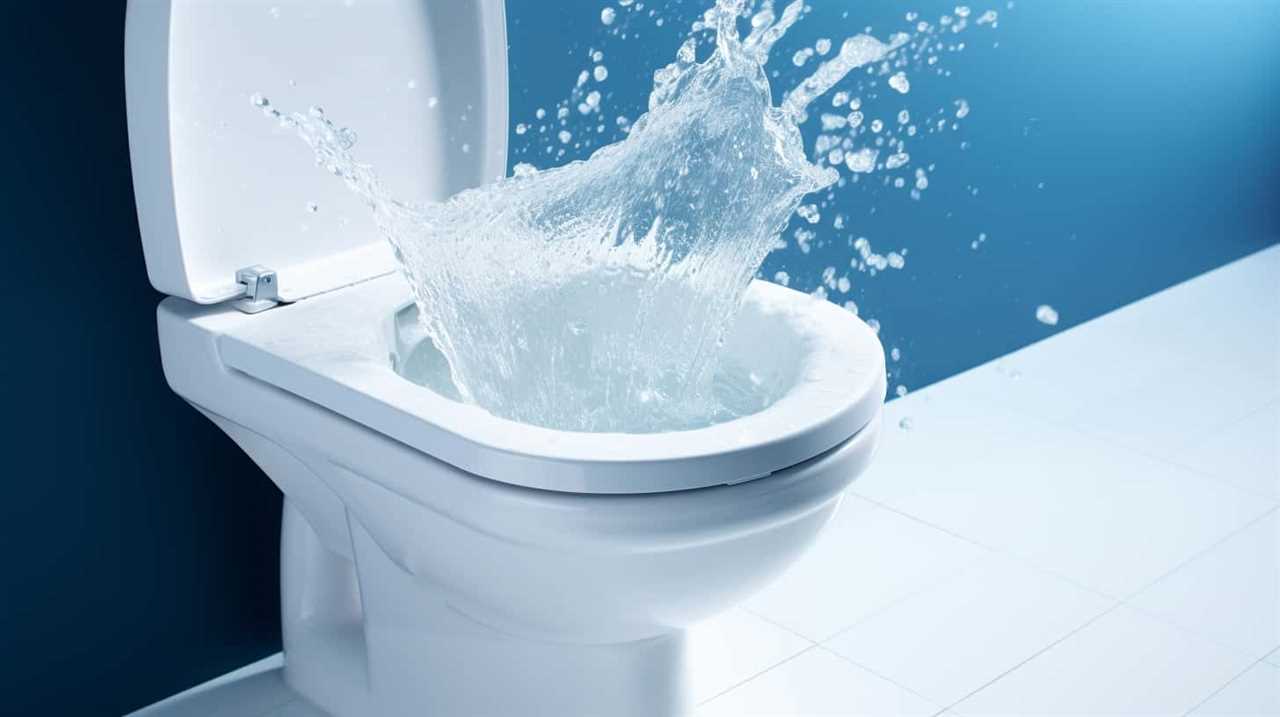
According to a survey conducted by the Japan Sanitary Equipment Industry Association, bidet adoption rates have steadily increased over the years. In 2019, approximately 81% of households in Japan had bidets installed in their bathrooms, showcasing the widespread adoption and acceptance of this technology.
The survey also revealed that bidet usage varies among different age groups, with younger generations being more inclined to use bidets compared to older generations. This can be attributed to the growing awareness of the benefits of bidets, such as improved hygiene and comfort.
With bidets becoming a common fixture in Japanese households, it’s interesting to explore bidet adoption in Italy, where bidet usage holds a different cultural significance.
Bidet Adoption in Italy
When it comes to bidet adoption, Italy stands out with its high usage rates. According to bidet usage statistics, Italy has one of the highest percentages of bidet installations in households compared to other countries.

This cultural preference for bidets can be traced back to historical influences, including Italy’s close proximity to France, where bidets originated. Additionally, the emphasis on personal hygiene and cleanliness in Italian culture has also contributed to the widespread use of bidets in the country.
Bidet Usage Statistics
We have found that Italy has the highest bidet adoption rate among all countries. In Italy, bidets are a common fixture in bathrooms, with approximately 97% of households having a bidet. This high adoption rate can be attributed to the cultural influence and long-standing tradition of bidet usage in Italy. In contrast, bidet usage in the United States is relatively low, with only a small percentage of households having bidets installed. Similarly, bidet adoption in China is also low, as bidets are not as widely used or accepted in Chinese culture. The following table provides a visual representation of bidet adoption rates in these three countries:
| Country | Bidet Adoption Rate |
|---|---|
| Italy | 97% |
| USA | <5% |
| China | <1% |
Understanding the bidet adoption rates in different countries is crucial in exploring the cultural influences on bidet usage.
Cultural Influences on Bidets
Moving forward from our analysis of bidet adoption rates, let’s delve into the cultural influences on bidets, specifically focusing on bidet adoption in Italy.

Italy is known for its strong bidet culture, with bidets being a common fixture in Italian households. This can be attributed to several factors, including historical and cultural influences.
In the Middle East, bidet usage is also prevalent due to religious and cultural practices that prioritize personal hygiene.
On the other hand, bidet preferences in Germany differ, with a greater emphasis on toilet paper usage.
These cultural variations highlight how bidet adoption is shaped by different societal norms and practices.
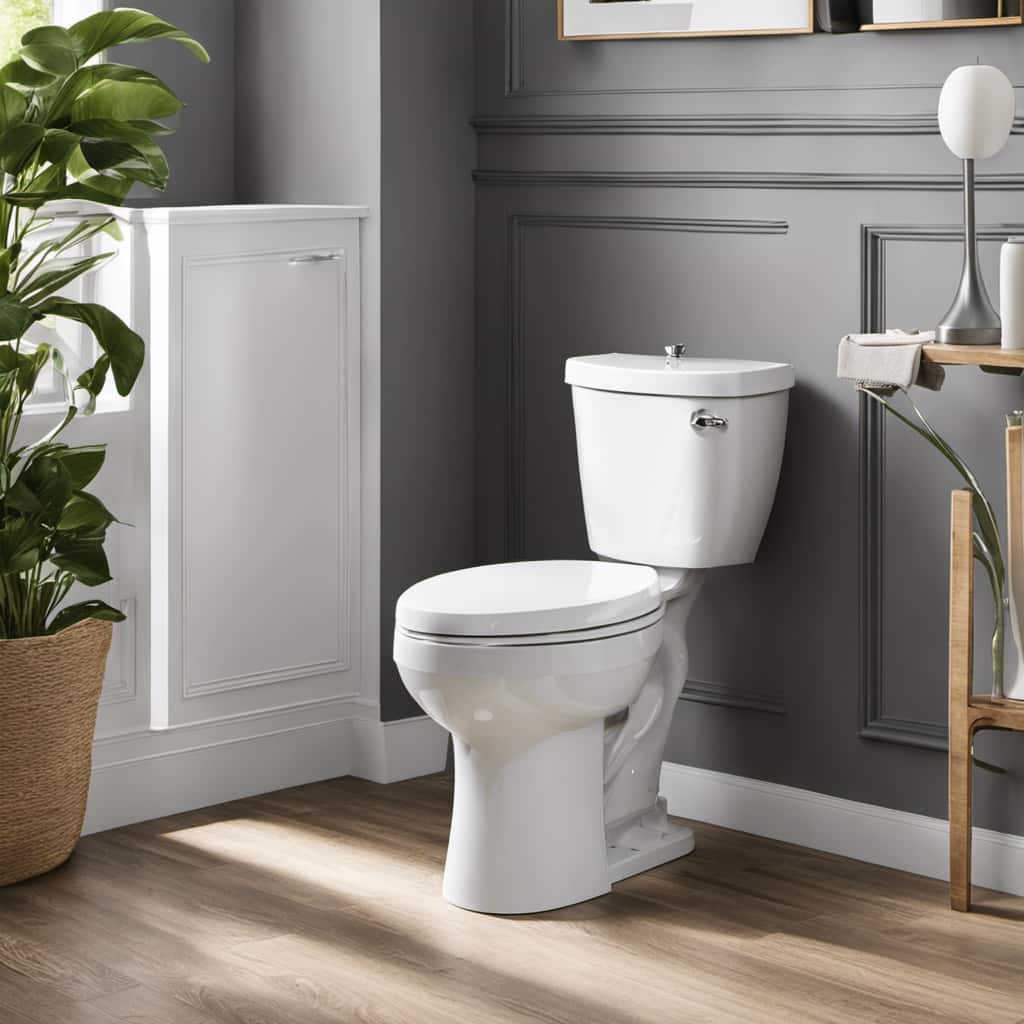
Understanding these influences can provide valuable insights into bidet usage patterns across different countries and help explain why bidets are more popular in certain regions than others.
Bidet Culture in France
When it comes to bidet usage, France is known for its strong bidet culture. Bidets are widely popular in French households and are considered a standard fixture in bathrooms.
In fact, bidets are so prevalent in France that it’s estimated that over 80% of French households have a bidet installed. This high level of bidet adoption in France highlights the importance of bidets in French hygiene practices and the cultural significance they hold in the country.
French Bidet Usage
French bidet usage is prevalent and ingrained in the culture of France. Bidets are commonly found in French households and are considered an essential part of personal hygiene. The bidet culture in France emphasizes cleanliness and hygiene, and bidets are seen as a more effective and hygienic alternative to toilet paper alone. To further illustrate the significance of bidet usage in France, we can compare it to other countries. The table below shows bidet usage in France compared to selected countries:

| Country | Bidet Usage |
|---|---|
| France | High |
| United States | Low |
| Japan | High |
As the table indicates, bidet usage in France is notably higher compared to countries like the United States, where bidets are not as commonly used. In contrast, bidet usage in Japan is also high, which suggests that bidets are valued for their hygienic benefits in both French and Japanese cultures.
Bidet Popularity in France?
Continuing the discussion from the previous subtopic, we can delve into the bidet culture in France and explore its popularity in the country.
French bidet etiquette is deeply ingrained in their daily routines, with bidets being commonly found in private homes and hotels. Here are some key insights regarding bidet usage in France:
- Bidets are considered an essential part of personal hygiene and are used after using the toilet.
- French bidet etiquette emphasizes cleanliness and freshness, with individuals using bidets as an alternative to toilet paper.
- Bidet usage in public restrooms isn’t as prevalent as in private settings, although some upscale establishments may offer bidets in their facilities.
- The popularity of bidets in France reflects a cultural preference for thorough cleanliness and a commitment to personal hygiene.
Bidets in South Korea
In South Korea, bidets are widely used in households and considered an essential bathroom fixture. The bidet usage in South Korea is significantly high, with a large portion of the population embracing this hygienic practice. The bidet market in South Korea is thriving, offering a wide range of options to cater to different preferences and budgets.

According to data from industry reports, the penetration rate of bidets in South Korean households is estimated to be around 80%, which is one of the highest in the world. This high adoption rate can be attributed to the cultural emphasis on cleanliness and hygiene in South Korea. The popularity of bidets has also been driven by advancements in technology, with features such as adjustable water pressure, temperature control, and even air drying functions.
As bidets continue to be an integral part of the South Korean bathroom experience, it’s intriguing to explore the bidet trend in Spain.
Bidet Trend in Spain
When it comes to bidet popularity in Spain, cultural factors play a significant role.
Spain has a long history of bidet usage, with the device being a common fixture in many households.

In fact, bidet usage statistics show that Spain ranks among the top countries in terms of bidet adoption and usage.
Bidet Popularity in Spain
We noticed a significant increase in bidet popularity in Spain. Bidet usage in Spain has been on the rise in recent years, with more and more households opting for this hygienic bathroom fixture.
Here are some key observations about bidet preferences in Spain:
- Increasing adoption: The number of households installing bidets has seen a steady growth, indicating a shift towards embracing this hygiene practice.
- Cultural influence: Bidet usage in Spain is deeply rooted in the country’s cultural heritage, where cleanliness is highly valued.
- Health benefits: The bidet’s ability to provide thorough cleansing has been a driving factor for its popularity, as it promotes improved personal hygiene and reduces the risk of infections.
- Environmental consciousness: With an increasing focus on sustainability, bidets are seen as a more eco-friendly alternative to excessive toilet paper usage.
Cultural Factors Influencing Bidets
Our observations on bidet popularity in Spain highlight the cultural factors that influence the bidet trend in the country.

Spain, like many European countries, has a long history of bidet usage. This can be attributed to the influence of bidet culture in neighboring countries such as France and Italy. Additionally, the Spanish culture places a strong emphasis on personal hygiene and cleanliness, which further contributes to the popularity of bidets.
In contrast, bidet usage in China is relatively low, as traditional Chinese culture doesn’t prioritize the use of bidets. Similarly, bidet culture in the United States isn’t as prevalent, with most Americans relying on toilet paper for personal hygiene.
These cultural differences play a significant role in shaping the bidet trend in different countries.
Bidet Usage Statistics
The bidet trend in Spain, influenced by neighboring countries and the emphasis on personal hygiene, is reflected in bidet usage statistics. Here are some data-driven comparisons to provide a thorough understanding of the bidet usage in Spain:
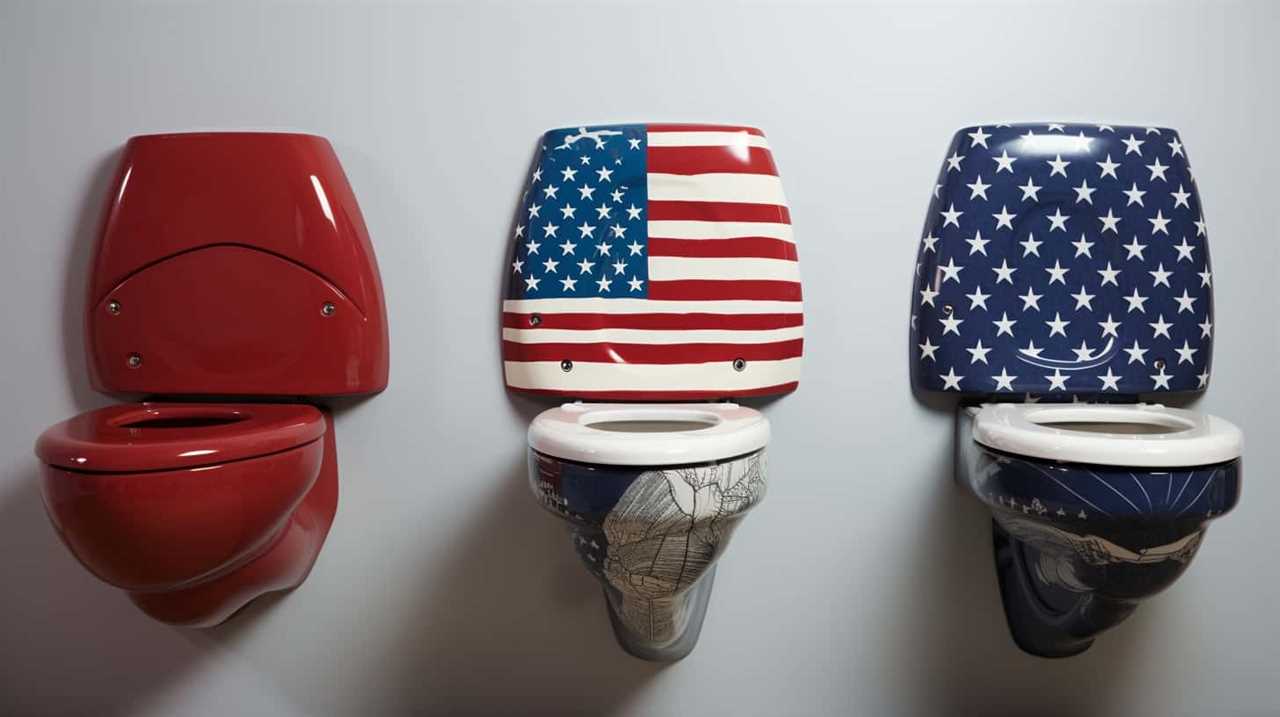
- According to a study conducted by the Spanish Institute for Statistics, approximately 85% of households in Spain have a bidet. This high adoption rate can be attributed to the cultural influence of neighboring countries like Italy and France, where bidets are also commonly used.
- In comparison, bidet usage in the United States is significantly lower, with only about 10% of households having bidets.
- On the other hand, bidet adoption in China, despite being a large market for bathroom products, remains relatively low, with less than 5% of households using bidets.
These statistics highlight the significant disparity in bidet usage between Spain and other countries.
Now, let’s delve into bidet preferences in Portugal.
Bidet Preferences in Portugal
Having analyzed bidet usage in various countries, it is evident that Portugal exhibits distinct bidet preferences. In Portugal, bidets are widely embraced for their hygiene benefits. The bidet market in Portugal has experienced significant growth in recent years, driven by an increasing awareness of personal cleanliness and a desire for enhanced hygiene practices.
To better understand bidet preferences in Portugal, let us take a look at the following table:

| Bidet Preference | Percentage |
|---|---|
| Standalone Bidets | 45% |
| Bidet Toilet Seats | 30% |
| Bidet Attachments | 25% |
As shown in the table, standalone bidets are the most popular choice among Portuguese consumers, accounting for 45% of bidet preferences. Bidet toilet seats and attachments also have a significant market share at 30% and 25% respectively.
These preferences highlight the importance placed on maintaining personal hygiene in Portugal, with consumers seeking different bidet options to cater to their specific needs and preferences.
Bidet Usage in Greece
Now let’s delve into how bidets are used in Greece. Bidet usage in Greece has seen a steady increase in recent years, reflecting a growing trend towards hygiene and cleanliness.
Here are some key points about bidet usage in Greece:
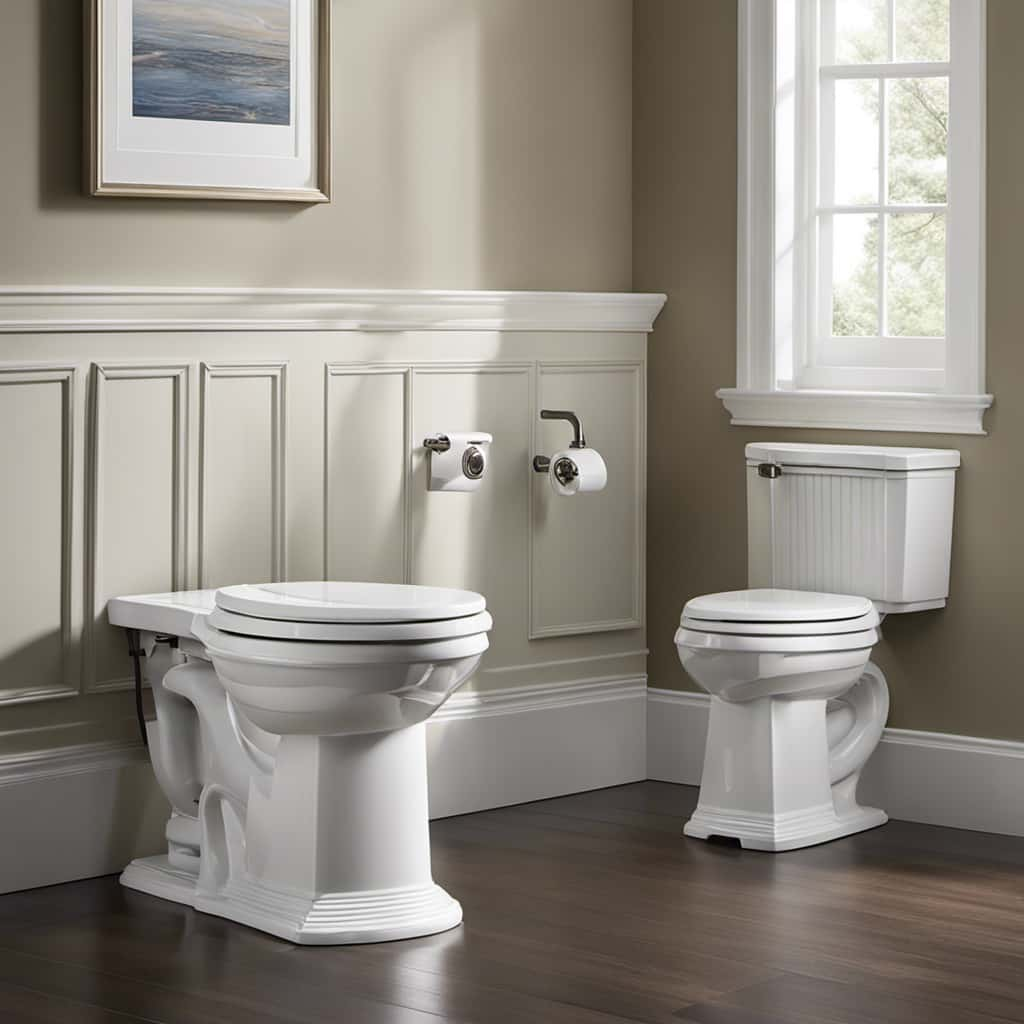
- Bidet adoption rate in Greece: While bidets weren’t traditionally common in Greek households, the adoption rate has been steadily increasing in urban areas. Many modern homes and hotels now include bidets as standard bathroom fixtures.
- Health benefits: Greeks are becoming more aware of the health benefits of bidet usage, including improved personal hygiene and reduced risk of infections. This has contributed to the increased acceptance and usage of bidets.
- Cultural factors: Greeks value cleanliness and personal hygiene, making bidets an attractive option for many. Bidets are seen as a hygienic alternative to traditional toilet paper.
- Environmental awareness: Bidet usage in Greece has also been driven by environmental concerns. By reducing the use of toilet paper, bidets help to conserve resources and minimize waste.
Bidets in Brazil
Let’s continue our exploration of bidet usage by turning our attention to Brazil.
Bidet usage in Brazil is relatively low compared to other countries. While bidets are commonly found in hotels and upscale homes, they aren’t as prevalent in average households. This can be attributed to cultural factors and the availability of alternative hygiene practices.
However, the bidet market in Brazil is growing steadily, especially in urban areas where people are becoming more aware of the benefits of bidet usage. With increasing globalization and the influence of other bidet-loving countries, it’s expected that bidet usage in Brazil will continue to rise in the coming years.
Now, let’s shift our focus to bidet tradition in Turkey.

Bidet Tradition in Turkey
Turkey is known for its widespread use of bidets in both private and public settings. The bidet tradition in Turkey dates back centuries, with historical records showing the use of bidets as early as the Ottoman Empire. Today, bidets are a common fixture in Turkish households and are considered an essential part of personal hygiene.
Here are some key points about the bidet tradition in Turkey:
- Turkish bidet history: Bidets have been used in Turkey for centuries, with evidence of their existence during the Ottoman Empire. They were initially introduced as a way to cleanse oneself after using the toilet and have since become a cultural norm.
- Bidet manufacturing in Turkey: Turkey isn’t only a country that uses bidets extensively but also manufactures them. Turkish bidet manufacturers have a long history of producing high-quality bidets that are exported to different countries around the world.
- Wide availability: Bidets can be found in almost every Turkish household and are also commonly found in public restrooms. This widespread availability showcases the importance of bidets in Turkish culture and their integration into daily life.
- Hygiene and comfort: The use of bidets in Turkey isn’t only a matter of hygiene but also a matter of comfort. Bidets provide a more thorough and gentle cleansing experience compared to traditional toilet paper, making them a preferred choice for many.
Bidet Usage in Argentina
When it comes to bidet usage, Argentina stands out as one of the countries with a high level of popularity. According to data, bidets are widely used in households across Argentina, with many bathrooms equipped with this hygiene fixture.
This cultural preference for bidets in Argentina can be attributed to various factors, such as historical influences, European immigration, and the emphasis on cleanliness in Argentine society.
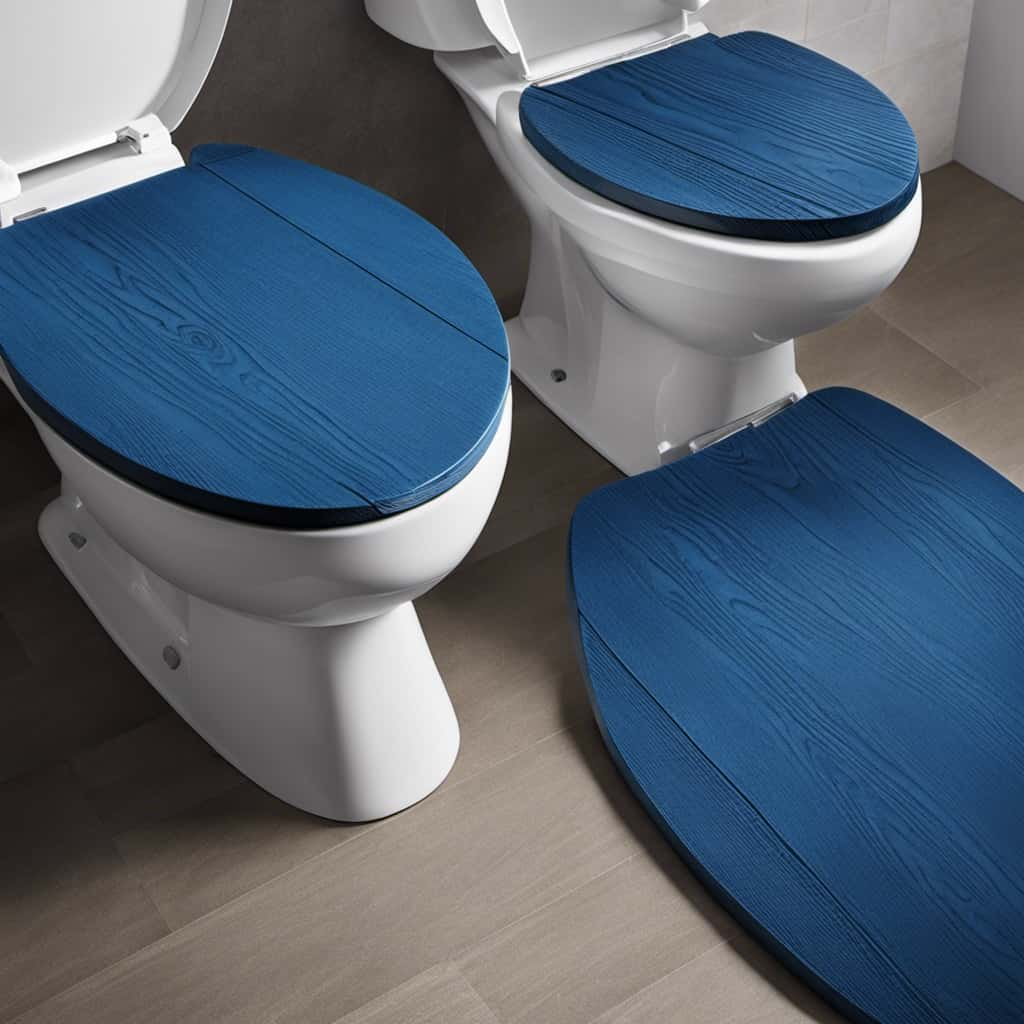
Bidet Popularity in Argentina
We have found that a significant number of people in Argentina use bidets on a daily basis. Bidet popularity in Argentina is high compared to other countries in the region, particularly Brazil, where bidet preferences aren’t as prevalent.
Here are some key factors contributing to the bidet popularity in Argentina:
- Cultural Influence: Bidets have been a long-standing part of Argentine culture and hygiene practices, with many households considering them essential bathroom fixtures.
- Hygiene Standards: Argentinians have high hygiene standards and value cleanliness, which is reflected in their regular use of bidets for personal hygiene.
- Health Benefits: Bidets are believed to provide superior cleanliness and prevent infections, making them a popular choice among health-conscious individuals.
- Accessibility and Availability: Bidets are readily available and affordable in Argentina, making them accessible to a wide range of people.
Understanding the bidet popularity in Argentina helps us explore the cultural factors influencing bidet usage in the country.
Cultural Factors Influencing Bidet Usage?
Bidet usage in Argentina is influenced by cultural factors that contribute to its popularity and regular use among the population. While bidets are commonly used in many countries, Argentina stands out as having a particularly strong bidet culture. This can be attributed to the influence of European immigrants, particularly from Italy and Spain, who brought with them the tradition of bidet usage.
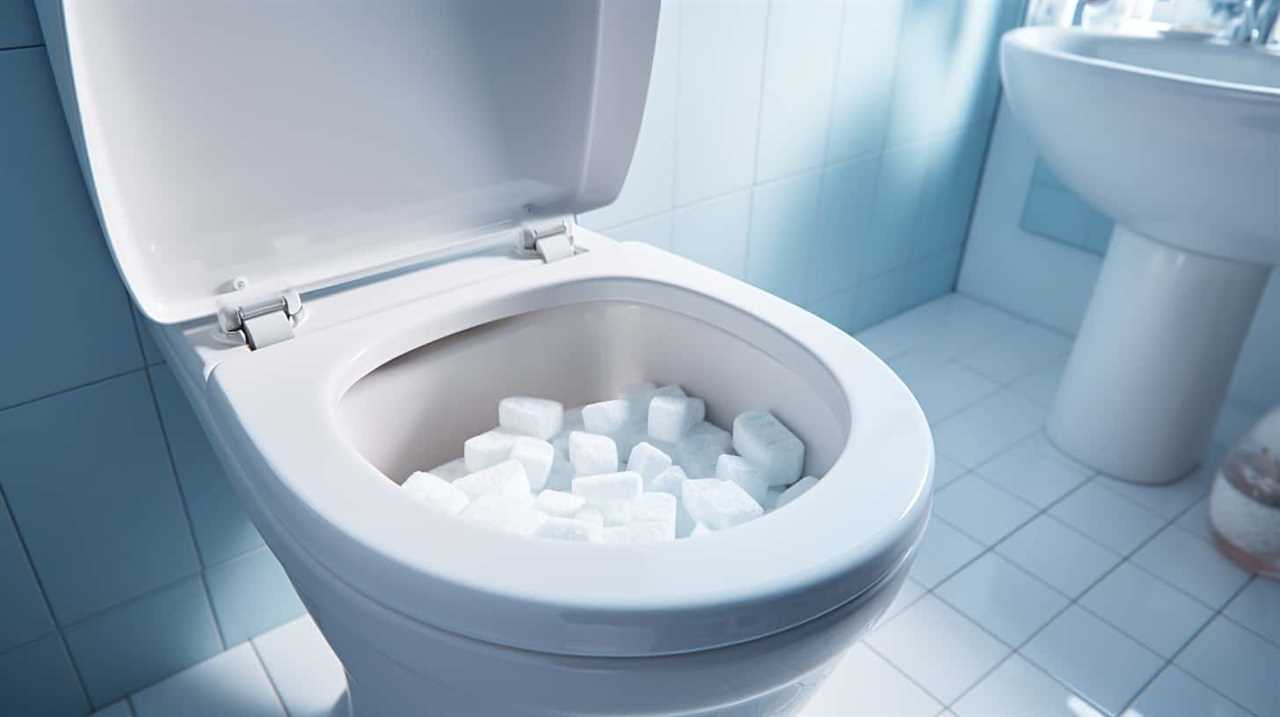
In addition, Argentina’s close proximity to countries like Brazil and Uruguay, where bidets are also widely used, further reinforces the cultural acceptance of bidets. Comparatively, bidet usage in China isn’t as prevalent, as it isn’t deeply rooted in their cultural practices. Similarly, while bidets are gaining popularity in Mexico, it’s still not as engrained in their bidet culture as it is in Argentina.
Bidet Adoption in Thailand
Thailand has embraced bidet adoption, with a significant increase in the usage of bidets across the country. This can be attributed to several cultural factors influencing bidet usage in Thailand:
- Hygiene practices: Thai culture places a strong emphasis on cleanliness and personal hygiene, making bidets an attractive option for maintaining cleanliness after using the toilet.
- Health benefits: Bidets are seen as a more effective and gentle way to cleanse oneself compared to traditional toilet paper, which can cause irritation or discomfort.
- Environmental awareness: As Thailand becomes more environmentally conscious, bidets are seen as a sustainable alternative to toilet paper, reducing the amount of waste generated.
- Tourism influence: The booming tourism industry in Thailand has introduced bidets to visitors from countries where bidet usage is more prevalent, leading to an increased adoption of bidets among locals.
Bidet Culture in India
In India, a significant number of households have embraced the use of bidets as a preferred method of personal hygiene. Bidet usage in India has gained popularity in recent years due to various cultural factors influencing bidet adoption.
One of the key factors is the importance placed on cleanliness and hygiene in Indian culture. Bidets are seen as a more effective and sanitary alternative to traditional methods like using toilet paper.

Additionally, bidets are believed to provide a more comfortable and refreshing experience, especially during hot weather. The growing awareness of the environmental impact of toilet paper usage has also contributed to the increased acceptance of bidets.
As more households in India become aware of the benefits and convenience of bidets, their usage is expected to continue to rise.
Bidets in Egypt
Egypt is one of the top countries in terms of bidet usage. Bidets in Egypt hold significant cultural significance and are widely adopted, especially in rural areas. Here are some key points about bidets in Egypt:
- Bidet adoption: Bidets are commonly found in Egyptian households, with a high level of acceptance and usage among the population.
- Cultural significance: Bidets play an important role in Egyptian culture, as cleanliness and hygiene are highly valued. Bidets are seen as an essential tool for maintaining personal hygiene.
- Rural areas: Bidets aren’t limited to urban areas in Egypt. In fact, bidet adoption is particularly prevalent in rural regions, where it’s considered an integral part of daily hygiene routines.
- Health benefits: Bidets provide numerous health benefits, such as reducing the risk of infections and improving overall cleanliness.
Transition: Now that we’ve explored the bidet culture in Egypt, let’s shift our focus to the bidet trend in Australia.

Bidet Trend in Australia
We’ve noticed a growing bidet trend in Australia, with an increasing number of households adopting this hygienic device.
Bidet adoption in Australia has been steadily rising in recent years, as more Australians recognize the benefits of using bidets for personal hygiene.
The bidet market in Australia has seen a surge in demand, with various brands offering a wide range of bidet options to cater to different preferences and budgets.
This trend can be attributed to several factors, including increased awareness of the importance of cleanliness, the growing influence of bidet use in other countries, and the desire for a more sustainable and eco-friendly alternative to toilet paper.

As bidet adoption continues to increase, it’s clear that Australians are embracing this hygienic solution for a cleaner and more comfortable bathroom experience.
Bidet Preferences in Canada
As we delve into bidet preferences in Canada, it’s evident that the growing bidet trend seen in Australia is also making its mark in this country. Bidet usage in Canada is on the rise, with more and more people recognizing the benefits of this hygienic device.
Here are some key insights into bidet preferences in North America:
- Comfort: Canadians prefer bidets that offer a comfortable seating experience.
- Water Pressure: High water pressure is valued, as it provides a thorough and effective cleanse.
- Temperature Control: Bidets with adjustable water temperature settings are popular, allowing users to customize their experience.
- Additional Features: Canadians appreciate bidets that come with additional features such as heated seats and air dryers, enhancing their overall comfort and convenience.
These preferences reflect the desire for a luxurious and personalized bidet experience in Canada, contributing to the increasing bidet usage in the country.

Frequently Asked Questions
What Are the Health Benefits of Using a Bidet?
Using a bidet has numerous health benefits. It is a more effective and hygienic option compared to toilet paper. Bidets help reduce the risk of infections, promote better cleanliness, and provide a soothing experience.
Are Bidets Only Used in Private Homes or Are They Also Common in Public Restrooms?
Bidet culture in public spaces varies across countries. Some countries, like Japan and Italy, have bidets integrated into public restrooms, providing accessibility for all. However, in other countries, bidets may not be as common in public settings.
How Do Bidets in Different Countries Differ in Terms of Features and Functionality?
Bidet design evolution and cultural differences in bidet usage contribute to the variation in features and functionality across different countries. These factors shape the way bidets are used and the specific features they offer.
Are Bidets Considered a Luxury Item in Some Countries, or Are They More of a Standard Fixture in Bathrooms?
Bidets are considered a standard fixture in some countries, while in others they are seen as a luxury item. Bidet usage varies across socio-economic classes, with higher usage in hotels and luxury establishments.
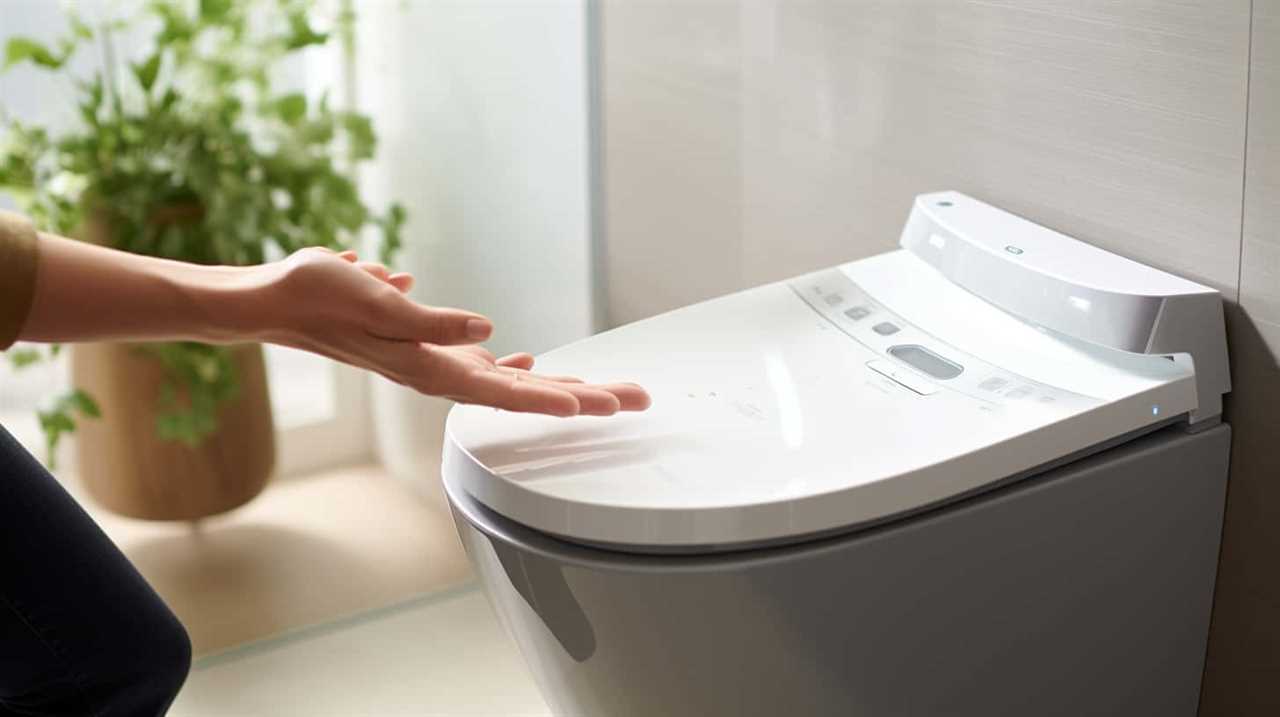
Are Bidets Environmentally Friendly Compared to Using Toilet Paper?
Bidets are more cost-effective than toilet paper in the long run, as they reduce the need for constant buying. Additionally, bidets can help reduce the spread of infections and diseases, making them more hygienic and environmentally friendly.
Conclusion
After exploring bidet usage in various countries, it’s clear that Japan takes the lead in bidet adoption. Italy, France, and South Korea also have a strong bidet culture, while Spain, India, Egypt, and Australia show a growing trend.
Canada, on the other hand, seems to have lower bidet preferences. Overall, bidet usage varies across the globe, but it’s evident that more countries are recognizing the benefits of this hygienic device.
